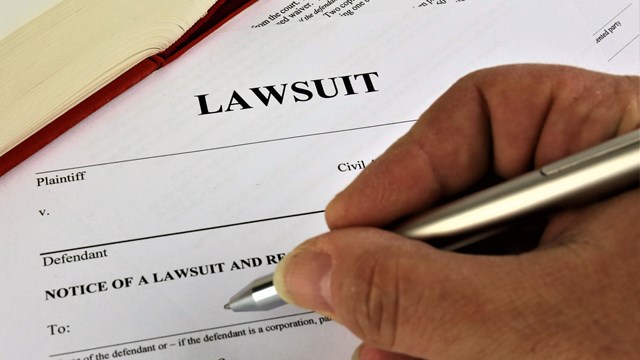In October 2000 Judge Louis York (New York Supreme Court, First Judicial Department) issued a decision that annulled the City of New York’s lead-poisoning prevention statute, commonly called Local Law 38. In the many news articles and attorney bulletins announcing this decision, it was widely assumed that the City would appeal, and that there would be a legal battle over whether filing an appeal would cause an automatic stay of Judge York’s ruling. Building owners, managing agents, and co-op and condo boards were generally advised to continue abiding by the requirements imposed by Local Law 38, despite them not being mandatory while the case was under appeal.
Since then, there has been practically no news coverage about the status of the case, or which lead paint law is currently in effect. In Judge York’s decision, it was clear that by nullifying Local Law 38, the "old" lead paint law (Local Law 1) would become the applicable law. To make matters even more complicated, there was confusion amongst owners and co-op boards throughout 2001 whether any actions were mandated at this time.
The immediate answer is that in late 2001, the New York Appellate Court issued a decision stating that while the City’s appeal is pending, Local Law 38 is reinstated. Confusion lingers however, due in part to the delayed final ruling on the City’s appeal, and in part over the reason Judge York annulled the law in the first place. Some background information may help clarify the issues.
Two years ago, then-Mayor Guiliani signed into law Local Law 38 of 1999 (New York City Administrative Code {27-2056.1…), which became effective on November 12 of that year. The new law was promulgated by the City Council and replaced Local Law 1 of 1982 (New York City Administrative Code {27-2013[h]) as the City’s lead-poisoning prevention statute. The enactment of this new law was challenged in court–both by community and public interest groups and by environmental watchdogs. On October 20, 2000, Judge York granted an application submitted by the New York City Coalition to End Lead Poisoning, Inc. and other plaintiff groups to nullify Local Law 38. As a result, Local Law 1 was temporarily reinstated. The City prepared and filed an appeal of this decision in the Appellate Division of the Supreme Court. To understand the controversy, it is important to review what obligations both Local Law 1 and Local Law 38 imposed on owners, and why Judge York ruled to nullify Local Law 38.
Getting the Lead Out
"Abatement" is defined as "removal, encapsulation or enclosure." Local Law 1 places a specific duty on owners to abate lead paint where children under seven reside. Under the old law, repair-in-place is not an option. Owners have the authority under Local Law 1 to enter dwelling units where children reside and abate hazardous conditions. The procedures to repair such hazards were found in the New York City Health Code {173.13 (c)-(d). Significantly, lead hazards included lead dust. The obligation to abate a hazardous condition is triggered when an "owner" (a landlord or board) has actual or constructive notice that a child under seven resides in an apartment. However, the owner does not have a continuing duty to ascertain whether a child does or does not reside in a unit.
By comparison, the new Local Law 38 presumes that any painted surfaces inside or outside a building built before 1960 contain lead-based paint. The law also requires that all painted doors and windows operate without binding or friction that would disturb the paint. Under Local Law 38, owners are required to mail or deliver an annual inquiry as to whether children under six years of age reside in a given apartment. Upon receiving notice that a child lives in a unit, the owner must perform an inspection of every painted surface of the apartment walls and ceilings (including the insides of closets and cabinets), doors and windows. Any peeling or defective paint must be abated. Under this new law, abatement now includes repairing-in-place by wet scraping and repainting. Each year, a similar inspection must be performed until the child reaches six years of age. The law also requires a complete visual inspection of all painted surfaces whenever an apartment becomes vacant–just prior to renting or selling the unit.
Local Law 38 also requires that the New York City Housing Preservation and Development Department (HPD) adopt new procedures for any repair/abatement of lead-based paint, including the cleanup and disposal of such paint. The New York City Department of Health also amended their lead paint codes in accordance with the new law and abatement procedures.
Judge York was presented with a petition to annul Local Law 38 based on the City Council’s decision to not prepare an environmental impact statement, and instead issue a "negative declaration" that the new lead paint law would have no negative environmental or public health impact. The case was based on a review of how the City Council adopted Local Law 38, and whether it followed the process mandated in applicable environmental protection laws.
State laws consider hazards to human health to be indicators of significant adverse impact on the environment at large. Conversely, under New York City laws, an action may have significant effect on the environment if it can reasonably be expected to lead to the creation of a hazard to human health or safety.
The New York Supreme Court was asked to consider whether the City Council should have prepared and issued a detailed environmental impact statement regarding any significant changes in the lead paint protection codes brought about by Local Law 38. Such changes include: a) omitting lead dust as a lead hazard [and therefore not inspecting for lead dust in the annual inspections]; b) reducing the age of children from under seven years of age to under six years of age as the threshold age that triggers the annual inspections and repair/abatement process; c) increasing the amount of lead content in paint before the paint is classified as lead-based; and d) allowing a 21-day period in which owners cited for lead-based paint violations could "escape" the HPD and Health Code standards for safe lead-based paint abatement by repairing deteriorated paint themselves.
In light of these and other issues, the court found that there was sufficient reason for the City Council to have conducted a detailed environmental impact study prior to enacting the new law. The court also found that the City Council’s "negative declaration" [that an environmental impact report was not necessary] should be annulled, as there was little evidence of a thorough investigation of all pertinent issues, and no explanation at all as to why lead dust should be eliminated as a hazard.
On the issue of lead dust, Judge York cited a 1996 decision of the New York Appellate Division (First Department) which required the City to perform an environmental impact statement before removing lead paint from the Williamsburg Bridge. In that case, the main hazard the Appellate Division wanted the City to address was the release of lead dust through the neighborhoods in the vicinity of the bridge. Judge York wrote in his decision: "In the wake of such ruling, this court cannot now tell the Appellate Division that a regulatory scheme for lead paint abatement which does not even include lead dust in the definition of a hazard was adequately reviewed by the Council."
What’s To Come?
So, what should building owners, managing agents, and co-op and condo boards anticipate in the next legal round with Local Law 38? It is clear that inquiries about young children residing in apartments, and periodic mandated inspections are here to stay. Further, everyone involved in maintaining, repairing, altering or replacing painted surfaces both inside and outside pre-1960 buildings must learn about the new procedures for handling painted surfaces–and prepare their budgets accordingly.
Although many in the real estate industry dread the labor-intensive procedures for repair or abatement of lead-based paint, these mandates are also here to stay. Regardless of the status of the City’s appeal, they are already part of the Department of Health codes. When approving or performing alterations to apartments or common areas, repainting fire escapes, refurbishing or replacing windows, repairing ceilings or walls after a leak, or even when going into a wall to perform simple electrical work–the new procedures must be followed. Outside contractors, plumbers, electricians, painters and building staff have to be educated how to observe the new codes. Similarly, owners and managing agents will have to understand and enforce the new codes. The repair procedures include multiple cleanings of the painted surfaces before and after the repair using a HEPA vacuum, isolating the repair area and covering the floor and adjacent furniture with heavy-gauge plastic, proper disposal, wet scraping only, and proper notifications to residents.
If the Appellate Court orders the City Council to revisit the entire law, they will likely set out to determine specifically whether the threshold age of children should be raised back to "under seven," whether the lead content of paint should be lowered when classifying it as "lead based," whether owners can self-police repairs and whether an owner’s visual report of painted surfaces is adequate. Lastly, they will rule on whether lead dust should be listed officially as a hazard. The issue of lead dust is the most contentious, and potentially the most costly. Lead dust can’t be tested visually–it requires certified inspectors taking dust samples and sending them to certified labs to determine the actual lead content. Procedures for repairing deteriorated paint that includes the abatement and cleaning of lead dust from an apartment or from common areas are not currently part of the new HPD and NYC DOH rules.
The Appellate Court’s decision is expected within the early part of 2002. Whatever the court decides, one thing is certain–the controversy will be far from over. In the meantime, it falls to managing agents to keep abreast of new developments and see to it that their buildings are compliant with whatever the final outcome may be.
Mr. Grant is Director of Management, Midboro Management, Inc.







Leave a Comment